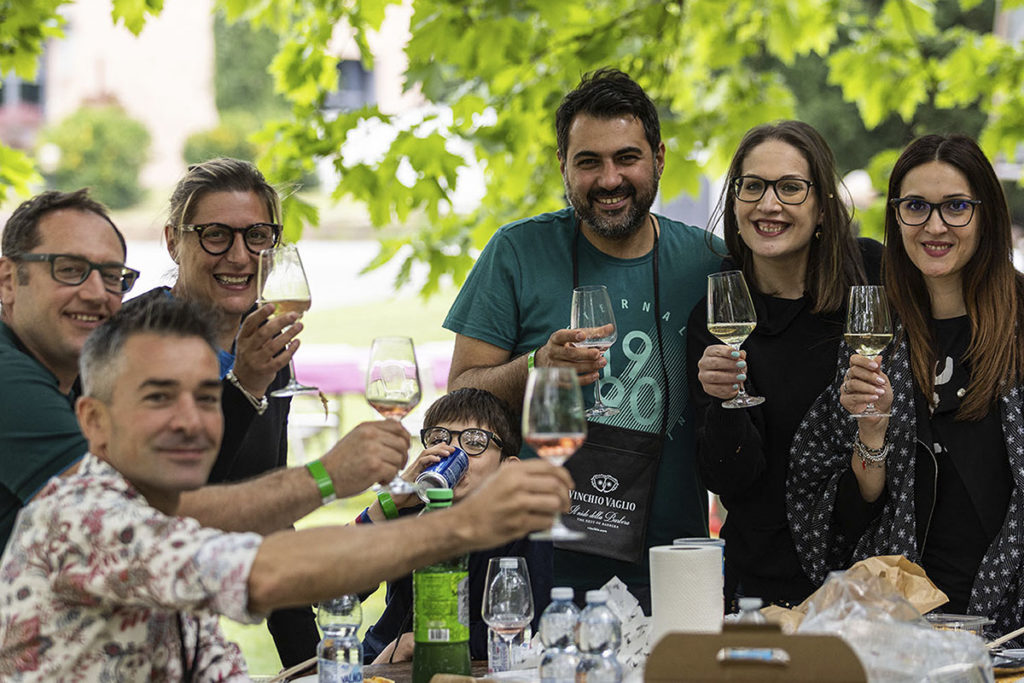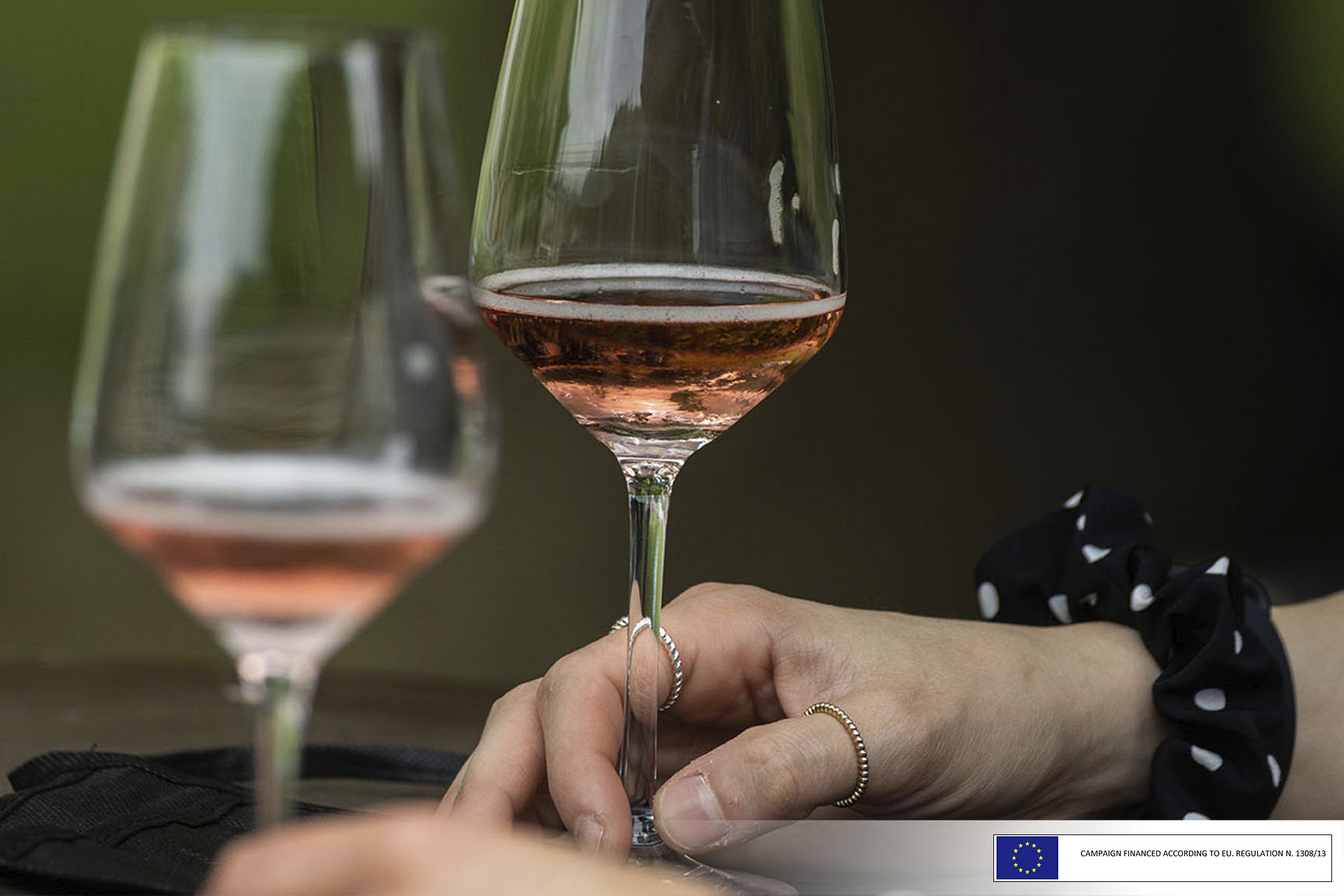Tasting a wine at home is a pleasure: this is how all our senses come into play, giving us a complete and involving experience.
It is well known that tasting is a complex operation that requires practice, however – even without being an expert – all you need to do to taste a wine at home is to follow these simple steps.
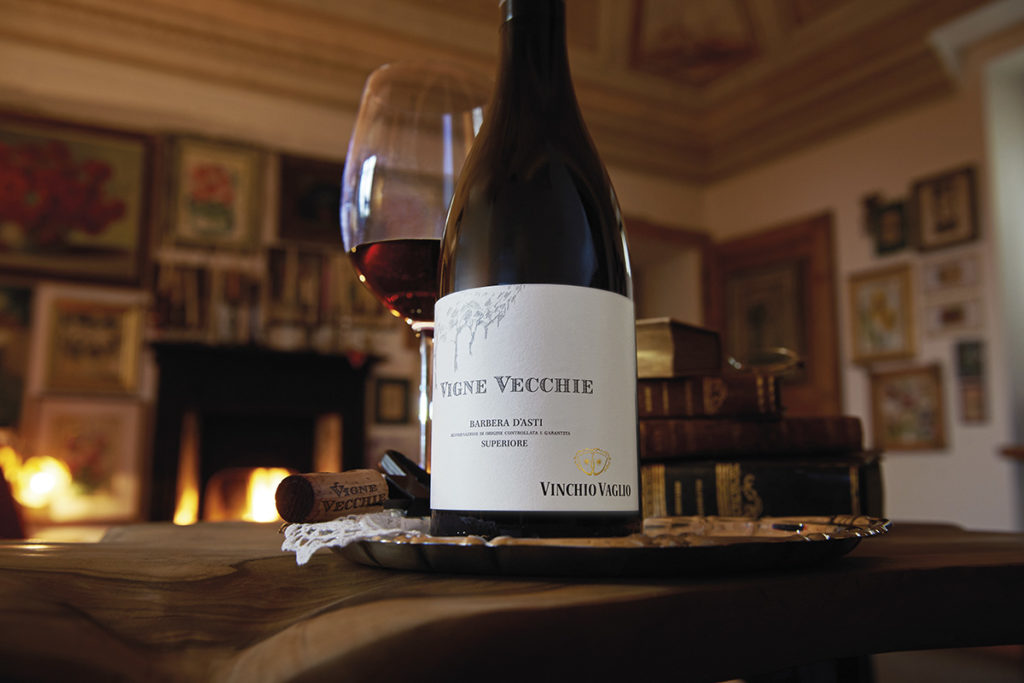
Why is it important to taste a wine?
At Vinchio Vaglio we always say this: wines are not meant to be drunk, they are meant to be tasted! This means putting your instinct aside, neglecting thirst (there is water for that) and concentrating on what you are doing.
Each wine can give a real sensory experience, where sight, smell and taste mingle with the pleasantness of the moment, enriching an indelible memory.
Because tasting also means knowing how to value the wine you have opened, the time you are dedicating to tasting and the people you are sharing the moment with.
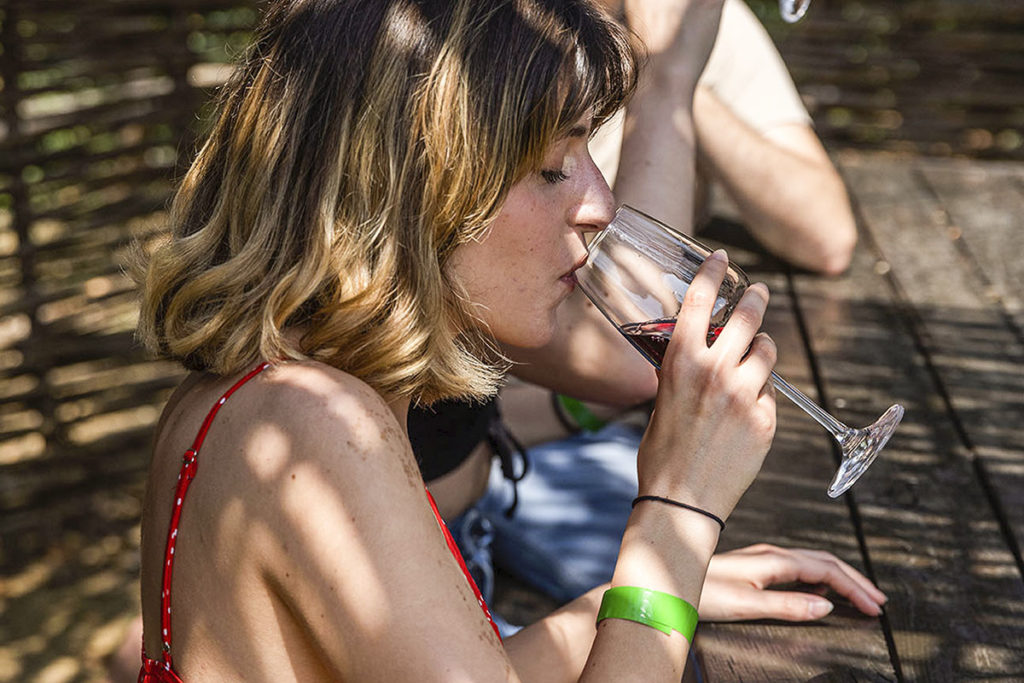
Choosing the right glass for tasting wine at home
The Persians and the Egyptians used cow horn, the Greeks used shells, the Romans used metal or earthenware glasses, called gobelet, and it was not until 1970 that the Austrian company Riedel began to produce different glasses, scientifically designed to enhance individual types of wine.
Nowadays, there is a specific glass for each wine: for Champagne, Chardonnay, Chianti, Brunello, Port, Sherry, Barbera (of course) and so on.
Generally speaking, well-aged red wines need large glasses with a wide rim, while a young, aromatic wine needs a smaller rim to convey the aromas towards the nose without dispersion, and finally sparkling wines require an elongated, pointed bowl to better maintain the course of the bubbles… but we have good news for you (and your cupboard): there are glasses that are almost universal!
The advice of enologist Matteo Laiolo:
In the winery we use a type of glass that is suitable for all tastings: both for white wines and for young red wines that are not too important, as well as for sparkling wines.
These glasses are also reasonably sized (both for the bowl and for the height of the stem), which allows them to be easily stored in the cupboard at home or at the restaurant, and they are also very resistant to the dishwasher.
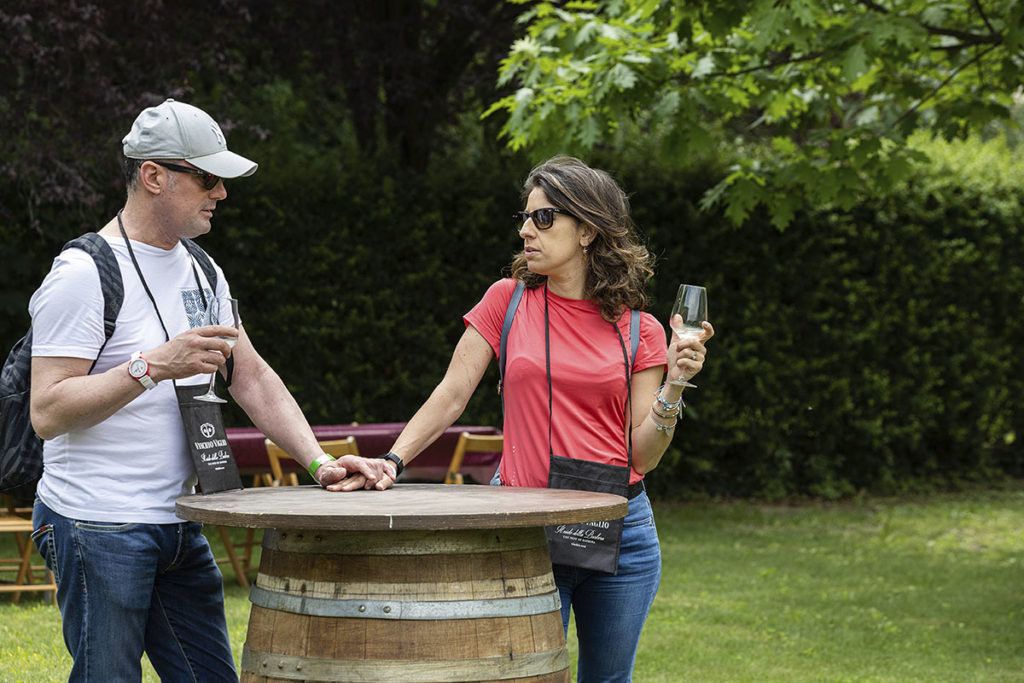
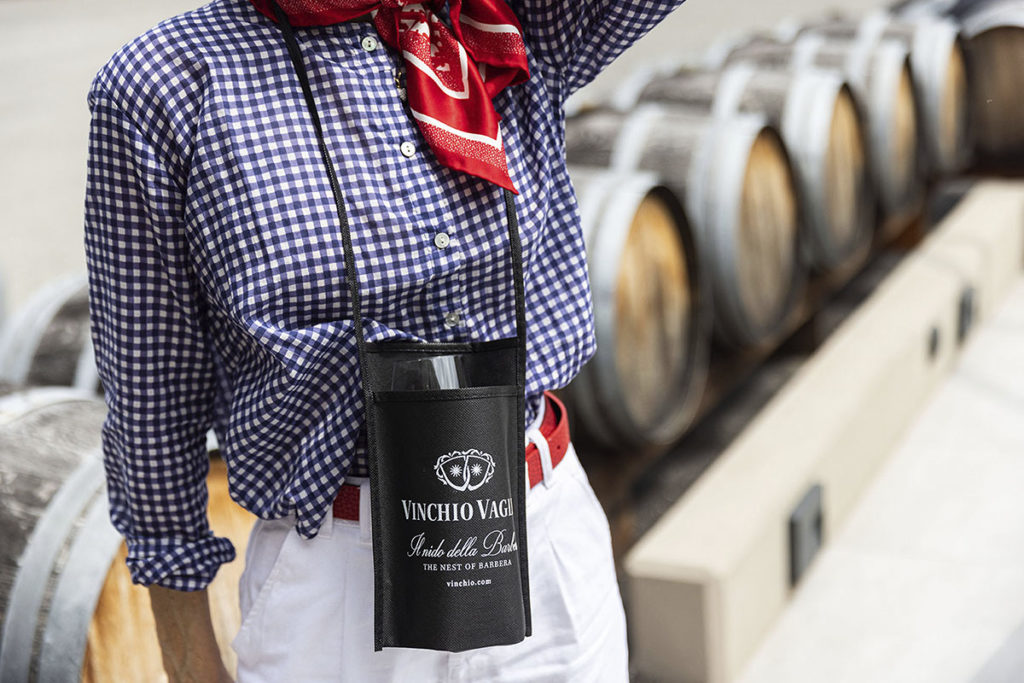
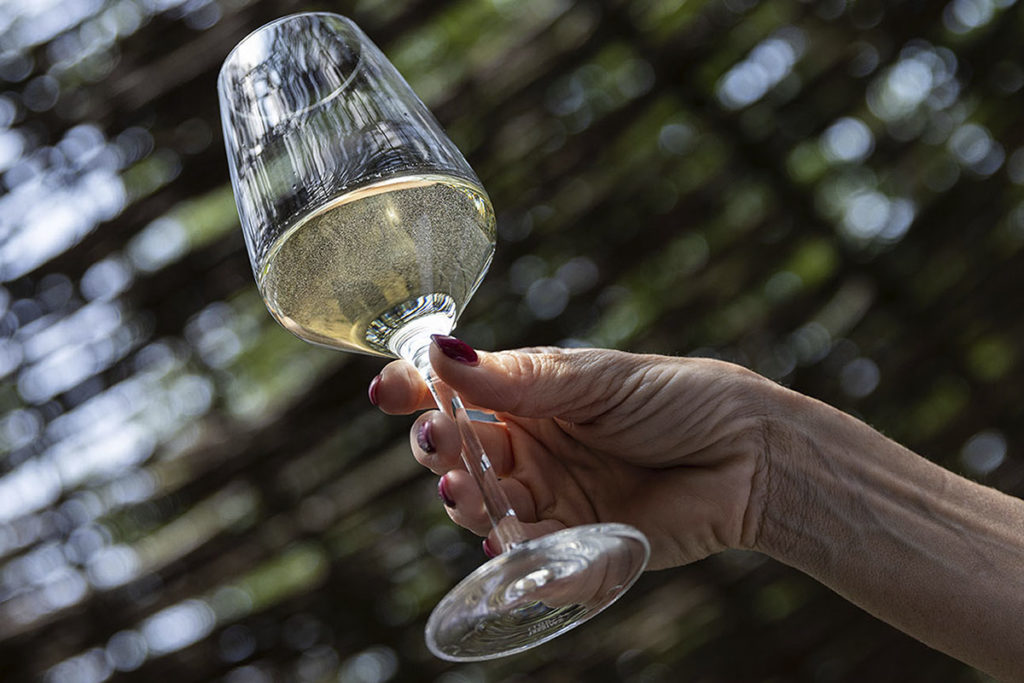
The preliminary phase of tasting
It all starts with a willingness to experience, so take your time: a wine is never meant to be tasted in a hurry.
If you have company, ask other people to accompany you on this journey, but be careful not to be influenced by their judgement: wine tasting is an individual experience of sharing.
Avoid wearing any perfume and eating overly spicy food around the time of the tasting, take a sip of water to rinse your palate and… let’s begin?
As soon as you open the bottle, you may notice a damp smell (similar to wet cardboard): it’s the classic ‘corky smell’. With experience, it will also be easier for you to detect the presence of a possible sulphurous smell, a hint of vinegar or yeast.
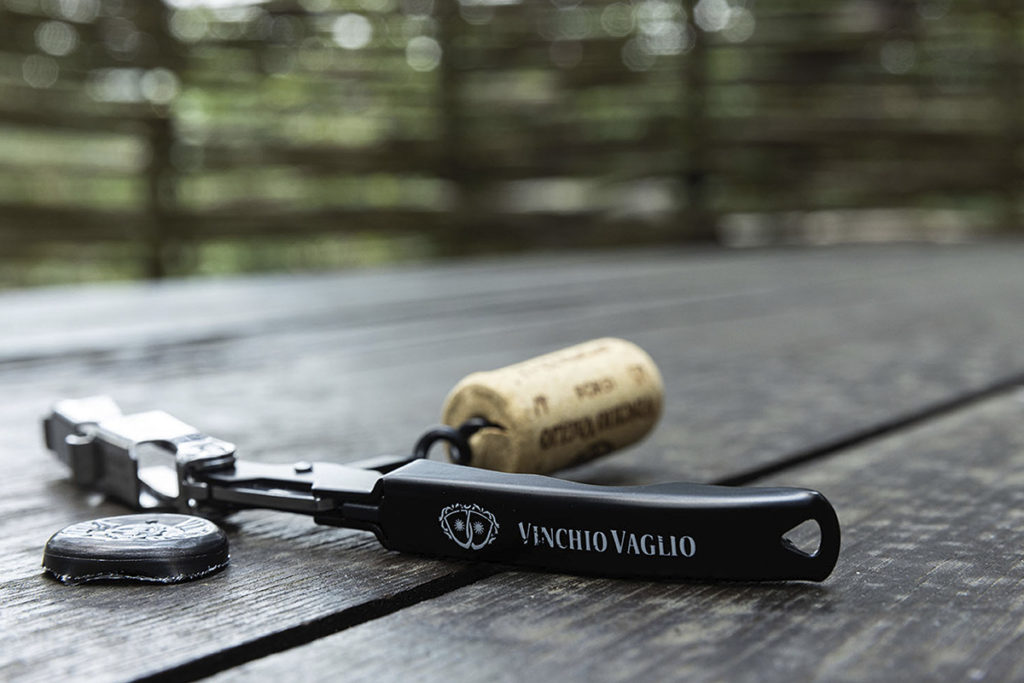
Listen to what these senses tell you
Sight
The first thing you need to pay attention to is what you see in three steps:
– carefully observe the wine as it is poured into the glass,
– bring the glass up to eye level to assess its transparency, clarity and effervescence. What colour does it have? Are there nuances? What is the dominant hue?
– Swirl the glass (always holding it by the stem) so as to bring the walls together to observe the ring of liquid from which the drops flow down the glass. You will notice the formation of ‘arches’ (‘tears’ in French).
Smell
Bring the glass close to your nose, inhale deeply and close your eyes. What sensations does it evoke in you? What does this smell remind you of? The association is often made with familiar natural scents such as flowers, fruits and herbs, but also leather, chalk and wood.
This is by far the part where sommeliers have the most fun telling what they smell with great precision. They range from ‘ripe cherries’ to ‘succulent summer fruit with ripe pulp, through an almost endless bouquet of scents such as spices, prunes, yellow and red flowers, and so on: but don’t be discouraged, being able to identify all of them is a matter of practice.
Taste
Alright, alright, it is finally time to taste the wine! Here’s how to do it: sip a small amount of wine, hold it in your mouth for a few seconds to get all the taste sensations.
See how the taste of wine varies from the initial moment to the final taste? Sweet, bitter, sour, salty are the four basic flavours our tongue is capable of recognising, yet the nuances and the way they interact are endless.

Enjoy!
Tasting a wine is a matter of sensitivity, concentration and personal taste.
Ask yourself: “did I like it?”. Your answer will be the only one that matters and, as time goes by (and with a little practice), you will be able to activate your senses more and more quickly and end up surprising yourself.
Not sure where to start? Come to the winery and take part in one of our guided tastings or one of the Masterclasses held by our oenologists!
